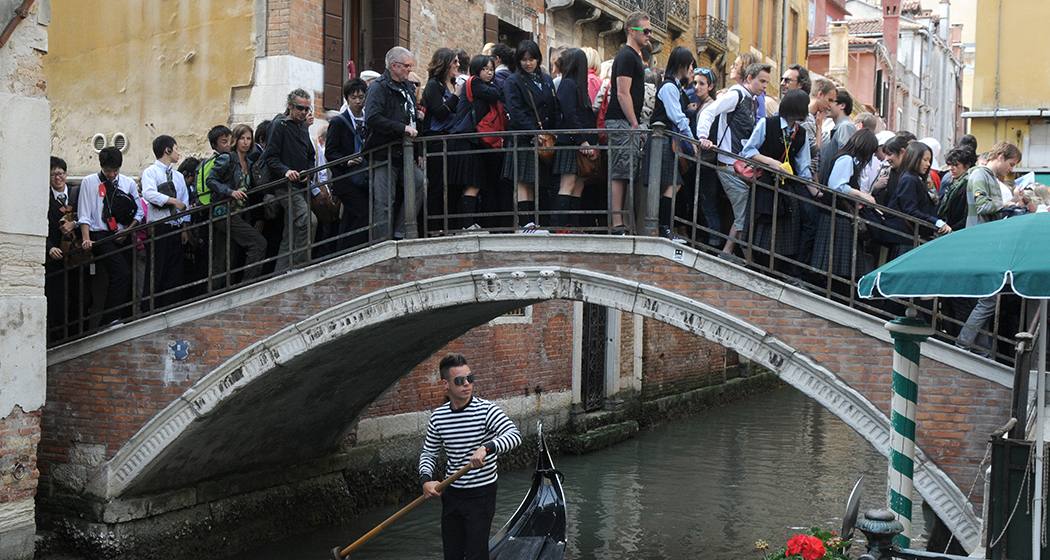
IESE Insight
How to be a global city that's not a victim of its own success
No one wants to become the next Venice, where residents feel trampled by overtourism. The key for any global city is to prevent its international outreach from destroying the local quality of life.
Internationalization creates a wealth of opportunities for cities, attracting talent, trade and investment that rural areas could only dream of. However, being a global metropolis has its drawbacks. There's the constant wear and tear on infrastructure, overtourism, environmental pollution, mobility issues and growing social inequality, just to name a few common concerns.
These are daunting challenges for urban planners and authorities, especially as competition with other global hubs only seems to grow. How can local leaders come up with strategies and policies to increase a city's international outreach and attractiveness without damaging the quality of life and well-being of its inhabitants?
Cities and International Outreach: The Era of the Global City — the fifth book in the "IESE Cities in Motion: International Urban Best Practices" series — tackles these concerns head on. Written by professors Pascual Berrone and Joan Enric Ricart, along with researcher Ana Isabel Duch T-Figueras, the volume focuses on how to make the most of internationalization, analyzing best practices and success stories around the world.
Five levers of change
Based on the authors' model for smart urban management, they put forward five areas of action to help city managers optimize internationalization efforts.
1. Infrastructure and urban planning. Global cities act as nodes of connectivity, both physically and virtually, through which people, goods, capital, knowledge and ideas all flow. Managing these flows requires substantial infrastructure — everything from sewage to telecommunications — and continuous improvements, as well as smart urban planning. One success story in this arena is the Gamcheon Culture Village in Busan (South Korea), an ambitious urban regeneration program that has stoked economic development. What started as a shantytown has become a tourist attraction, drawing more than two million visitors a year to see art and cultural events that make the most of the urban area's quirks and assets.
2. Policies, legislation and regulations. Regulatory frameworks that facilitate international business and trade are fundamental for global cities. To that end, many cities have established initiatives and offices to help with international outreach. For example, Miami created its international trade offices to help diversify its economy, which was relying heavily on tourism. Miami's outreach has helped it become known as the Gateway to Latin America.
3. New applied technology and innovations. Information and communications technologies (ICTs) are improving connectivity and leading to new business models. Indeed, in some respects, the digital revolution has eliminated national borders and facilitated exchanges at all levels. In this context, ICT advancements are opening up new forms of citizen engagement and decentralizing power and decision-making. They have also established new spaces for collaboration. That said, new technologies are also changing the dynamics of social inclusion and exclusion: policymakers must be mindful and try to bridge the digital divide.
4. Changes in people's behavior and preferences. When designing and implementing policies related to international outreach, city leaders must take evolving customs and tastes into account. For example, today's urban tourists are increasingly seeking more authentic experiences and ways to avoid overtourism's crowds. At the same time, local residents are more likely to raise their voices against overtourism's problems — from cruise ship pollution to climbing prices. In fact, organized city networks that include town halls, business groups and civil society are proliferating to share experiences and create a collective voice on issues such as overtourism, environmentalism and sustainability.
5. New business models. With technological innovations and changes in people's preferences and behaviors, new business models are emerging. For example, in the tourism industry, there's Authenticitys, an online platform created to promote more authentic and sustainable travel experiences by teaming up with local entrepreneurs in many cities around the world. The idea is that tourists can get off the most crowded sidewalks to explore food markets, urban regeneration projects, vegan restaurants or beekeeping. It's an idea that may help keep international visitors and local inhabitants happier in a global city.
